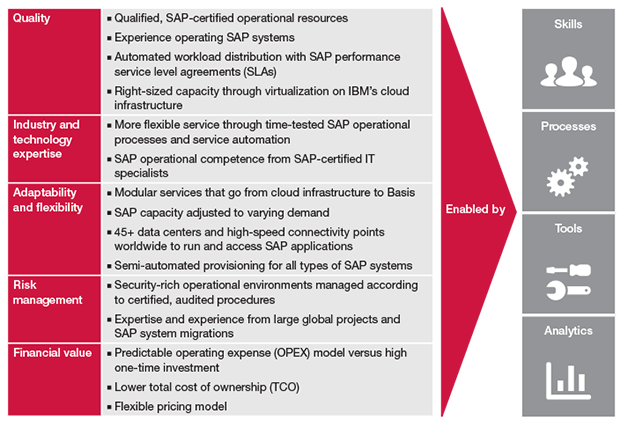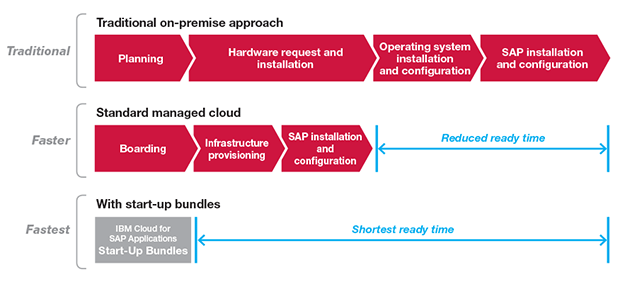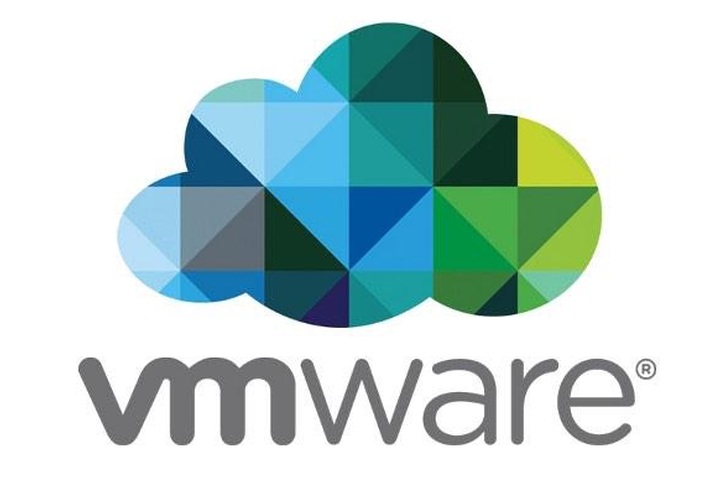Double Down on Simplification with SAP HANA and the Cloud
Why a Future-State Platform Requires a Cloud Delivery Model
Organizations are well aware of the calling cards of the cloud — responsiveness, agility, and innovation. These benefits also hold true for SAP HANA and SAP S/4HANA, SAP’s re-architected next-generation business suite that customers are using to spark the digital transformation of their business. SAP HANA’s in-memory database can process data at blazing speeds, allowing you to glean insights from advanced analytics. With improved agility and responsiveness, customers can pivot in real time to the needs of users, customers, and changing market conditions. And with collaboration features enabled by real-time integration with Internet of Things-connected devices and business networks, companies can drive innovation with embedded predictive capabilities.
By deploying this technology in the cloud, you can take advantage of the flexibility and avenues for innovation offered by SAP HANA and SAP S/4HANA while also benefiting from an equally liberating infrastructure that offers a low total cost of ownership (TCO) and a scalable consumption model as an operational expense.
Digital Transformation Requires Forward Momentum
SAP customers are increasingly looking to the cloud along with SAP HANA and SAP S/4HANA to serve as the primary cornerstones of their digital transformation. But how are they arriving at this decision to deploy in the cloud?
Many organizations are reaching an inflexion point at which they must choose the shape of their future SAP environment. The triggering force behind this decision can be an acquisition, a migration, an infrastructure reaching end of life, increased line-of-business requirements, the speed of the marketplace, or a need for tighter integration with a robust business network, to name a few. And the emergence of SAP HANA is yet another trigger point in getting companies to consider their SAP deployment options.
These trigger points force the organization to make a decision about which SAP deployment will best support their business needs and long-term strategy. There are many factors to weigh: Does the organization have the in-house skills to build and manage an SAP HANA environment? If it’s an acquisition, does the organization have to increase its data center footprint? What will a hybrid landscape look like, and who will manage it? How do I manage through the transition from a heritage database to SAP HANA-based systems?
Hesitancy can crop up if a company sees a system running well on premise, and needs to justify transitioning to a cloud platform while factoring in concerns such as risk exposure or cost. In the end, though, most organizations faced with an impending investment recognize that a cloud delivery model is worth the transition.
A desire for business transformation is one of the main drivers for a migration path to SAP HANA and SAP S/4HANA, and that transformation is also enhanced by simplifying that environment. Organizations that commit to a cloud deployment do so to ensure this simplicity, as well as to mitigate a range of challenges, not the least of which are strained IT budgets, high TCO, inflexible infrastructures, long lead times, and a lack of resources.
IBM — an SAP global partner and an SAP-certified provider of cloud services — addresses these challenges with years of experience managing SAP applications on a shared virtualized infrastructure. IBM Cloud for SAP Applications delivers SAP systems on a production-ready private cloud environment that is built for enterprise-class performance and scale. IBM has valuable experience in hosting SAP environments in a scalable and cost-effective cloud environment, which helps make for a seamless transition to SAP HANA and SAP S/4HANA (see Figure 1).

Options for a Multitude of SAP HANA Environments
IBM Cloud for SAP Applications helps companies begin their digital transformation with a unique and flexible set of three service offerings:
- Managed operating system: Includes support for the most common SAP operating systems — AIX, Red Hat, and Microsoft Windows — in a virtualized environment with common infrastructure support (including servers, storage, and network)
- Managed database: Includes managed services and database administration for SAP HANA and non-SAP HANA database systems
- Managed SAP (Basis): This highest level of support includes database and Basis support of the system
IT increasingly is viewed as a key differentiator in the marketplace. The IT organization is being pressed by the lines of business to deliver innovation that can in turn allow companies to modify business models or introduce new products to better compete in the market. Leveraging a cloud deployment for the SAP environment frees key IT resources to devote more time to delivering real innovation instead of managing the IT infrastructure. These key resources are then available to implement new features and functions, and can also better respond to line-of-business requests.
Implementing in this manner allows customers to recognize more quickly the real-time benefits of running in an SAP HANA environment. Lines of business need IT assistance to leverage the new tools, allowing them to operate more efficiently and better respond to market demands.
Another layer of consolidation around SAP HANA that drives a need for managed cloud services is that its in-memory, column-based storage supports a tiered database architecture — multiple appliances on a larger infrastructure rather than multiple infrastructures. The ability to support rapidly growing data volumes in a larger infrastructure likewise incentivizes organizations to focus more on making sense of that data to drive business outcomes rather than on provisioning and managing ever-increasing terabytes of structured and unstructured data flowing through the business.
In addition to offloading day-to-day management, another benefit of running mission-critical SAP systems on an IBM managed cloud service includes network and availability offerings. These offerings include more than 45 global data centers — including at least two data centers in every major region — that ensure IBM has the bandwidth to host even the largest SAP infrastructures.
Business-centric service level agreements (SLAs) include up to 99.9% availability at the SAP level and disaster recovery capabilities that provide a recovery point objective (RPO) of 15 minutes and a recovery time objective (RTO) of four hours. In addition, service delivery options include SLAs that guarantee how fast IBM responds to the customer, depending on the severity level of the issue at hand, and how quickly that issue will be resolved. In this way, support is maintained throughout the onboarding process, from first engagement to the running of the environment.
IBM Cloud for SAP Applications Start-Up Bundles were initially conceived for SMEs, but we have found that they can also benefit large enterprises.
Get a Jump on SAP HANA with Pre-Built Packages
From the standpoint of the SAP customer, every SAP HANA environment is different — and so is each cloud journey. Simplifying the infrastructure and simplifying the management of that infrastructure, then, should not entail being bogged down by decisions about which route to take to reach that desired simplicity, especially when time to deployment is a high priority.
IBM Cloud for SAP Applications Start-Up Bundles address these decision points. These are pre-configured, ready-to-go products that perform proof of concepts with the latest SAP products — including SAP S/4HANA Finance — quickly and easily, offering an easy transition to production and non-production environments within the same cloud environment (see Figure 2). Cloud deployment using the start-up bundles eliminates the planning, hardware, operating system, and software installation and configuration required when provisioning and deploying an on-premise application.

While a standard managed cloud shrinks the readiness timeline by eliminating the need to request and provision new hardware, IBM Cloud for SAP Applications Start-Up Bundles offer an even quicker time to value with three pre-built configurations for the most common SAP HANA deployments:
- SAP S/4HANA Finance: Includes an SAP Fiori add-on, SAP Fiori front-end gateway, and web dispatcher
- SAP Business Warehouse (SAP BW) powered by SAP HANA: Includes SAP BusinessObjects Planning and Consolidation and the BI content and BI content extensions add-ons for SAP BW
- SAP Business Suite powered by SAP HANA
The start-up bundles — which only require a minimum three-month commitment — follow a simple process for getting up and running with one of the three pre-built configurations. First, a customer is given an SSL certificate and the IP address or host name of an assigned jump server. Next, the customer uses its own SSL-encrypted remote desktop client servers to access the jump box via the internet. The selected bundle is then placed into a subnet for the duration of the contract, and no permanent network integration into the client environment is required. Upon completion of the project, we offer the options of migrating to a regular cloud service or exporting the data.
An outcome-based focus places a premium on breadth of experience and trust for managing an SAP HANA deployment in the cloud.
Released in April 2016, IBM Cloud for SAP Applications Start-Up Bundles were initially conceived as a way for small and medium-sized enterprises (SMEs) to experience SAP HANA without the need for a larger investment. We have found that in addition to serving this scenario well, the start-up bundles can also benefit large enterprises. For example, they can be a cost-effective way for large enterprises to quickly stand up an SAP HANA environment while significantly mitigating risk. They can also serve as a de facto placeholder for a more permanent hosting model while a large project is under way. A large enterprise anticipating a full-scale SAP S/4HANA migration within a certain time frame, say, six months to a year, might use the start-up bundles as a way to test-drive a non-production or test environment in advance — gaining hands-on experience while finding out if they want to do the full deployment.
IBM Cloud for SAP Applications Start-Up Bundles are the answer to a common request we hear from customers, which is reassurance that every incremental investment they make steers them toward progress — that every investment is a proven step in the right direction to their desired future state. These customers know that SAP HANA is a platform for innovation, and they also know that innovation will most assuredly be stifled if they have to manage growing data volumes, hardware clusters, availability, and disaster recovery scenarios.
Taking Confident Steps Toward a Reimagined Business
SAP HANA is the platform upon which all SAP innovations will be delivered, so customers are far more invested in outcomes than they have been in the past. When companies take it to the cloud, they’re looking not only for a standard return on investment, but at whether the investment results in value-added outcomes: Will the business really be able to remodel business processes? Will SAP HANA allow the business to serve customers and partners more dynamically? Will integration into a connected business network open the possibility of changing business models, or open a path to the creation of a new product?
An outcome-based focus places a premium on breadth of experience and trust for managing an SAP HANA deployment in the cloud, and that’s the key reason IBM is an ideal cloud partner for managing systems and infrastructure that are more vital than ever to the long-term success of the business.
A digital transformation is a complex undertaking. Simplification doesn’t mean easy. With IBM Cloud for SAP Applications, the journey toward digital reinvention doesn’t have to be fraught with complexity and cost overruns. With IBM as a trusted partner, you can be assured of improved cost efficiency, an enterprise-class infrastructure with best-in-class SLAs, reduced complexity, improved scalability and resiliency, and SAP specialists with expertise in SAP HANA.








